|
Explore the Hidden Clues of
|
 | 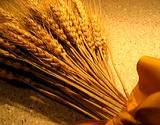 | 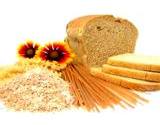 |
Wheat allergy symptoms can range from a minor cough, sneeze or tick to debilitating muscle weakness or chronic hyperactivity. Adults, children, toddlers, infants and even infants in the uterus can show symptoms of a food allergy. Most of the time these symptoms are overlooked as a simple case of the hiccups or the baby is just finicky. It's usually the simple symptoms that you'll notice in the early stages of a food allergy.
If you don't notice the clues at an early stage these symptoms can quickly develop into a chronic condition that is misdiagnosed.
Unless a food allergy is life threatening the symptoms are easily either overlooked or diagnosed as:
- hay fever
- stomach cramps
- ear infection
- diaper rash
- dry itchy skin
- weak bladder
- bed wetting
- diarrhea
- constipation
Hyperactive children are often diagnosed as spoiled problem children, when they are actually showing symptoms of a reaction to a food allergy.
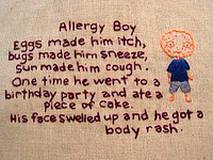 Wheat allergies are really tough to diagnose and treat, simply because wheat is in just about everything eaten in the United States. It's one of the main ingredients in not only our staple foods, like bread and rolls, but also our comfort foods, like cookies and cakes.
Wheat allergies are really tough to diagnose and treat, simply because wheat is in just about everything eaten in the United States. It's one of the main ingredients in not only our staple foods, like bread and rolls, but also our comfort foods, like cookies and cakes.
The reason the diagnoses of a wheat allergy can be so tricky is that the allergy could be limited to just wheat gluten or the food allergy is actually a gluten allergy. Gluten is found in many kinds of foods, like corn, rye and barley.
The safest and most reliable way to know exactly what kind of food allergy you are dealing with is to go on a Food Elimination Diet.
There are several kinds of food allergy diets. The best thing to do is, start with the easiest food allergy diet and simply eliminate that food your suspicious of for several days and see if you notice any decrease in your symptoms. Then try eating the food again to see if the symptoms suddenly reappear. If you suspect you may have an allergy to several foods it's best to click on the Food Elimination Diet link above and follow try the other diets.
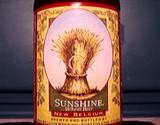 | 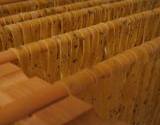 | 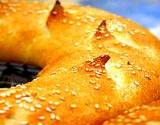 |
Look for these Clues if you Suspect
Wheat Allergy
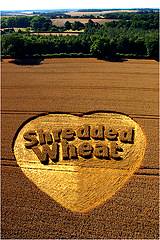 Eliminating wheat from you diet can be a challenge. At first just shopping and reading labels will be tedious and time consuming. The wheat allergy diet is without a doubt doable, especially now that many companies recognize that a large percent of our population have a wheat allergy.
Eliminating wheat from you diet can be a challenge. At first just shopping and reading labels will be tedious and time consuming. The wheat allergy diet is without a doubt doable, especially now that many companies recognize that a large percent of our population have a wheat allergy.
If you do a little research you'll find a lot of companies that make gluten free products. Their recipes have gotten pretty tasty over the years and you won't be limited to a nice variety of foods you'll be able to eat without feeling deprived.
Here's a list of some of the symptoms to look for if you suspect you're dealing with a wheat allergy:
- nose problems, running nose, itchy nose, red nose
- wheezing and asthma
- eczema
- hives
- headaches
- ear problems, red ear lobes, earache, runny ears, ringing or buzzing in ears
- recurrent infections
- bed wetting
- nightmares
- muscle pain or weakness
- joint tightness, arthritis, muscle cramps or numbness
- colitis
- stomach disorders, stomach cramps, ulcers
- kidney problems
- sudden diaper rash, red ring around rectum, scalding
- hyperactivity
- sudden outbursts, irritability, confusion
- vaginal discharge or yeast infections
- rapid pulse
- red checks
- dark circles under eyes
- erection in young children
- diarrhea
- constipation
If one family member has already been diagnosed or simply discovered on their own they are dealing with a food allergy then most likely other family members are dealing with the same allergy, even though the symptoms may be all together different.
For instance my family has a food allergies to dairy products. My two oldest sons will suffer from colitis and diarrhea if they drink milk or eat a good quality of cheese. Where my youngest son will get hay fever symptoms and develops emotional problems, like nightmares if he eats ice cream. I get migraine headaches if I put milk in my coffee or try eating ice cream.
Always be suspicious of the foods you love. If you try eliminating a food from your diet and you find yourself craving that food that is most likely the food you are allergic to.
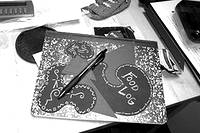 Pay attention to your body. Your body will send you the best clues. If you don't feel right after eating anything with wheat in it then you're dealing with a wheat allergy.
Pay attention to your body. Your body will send you the best clues. If you don't feel right after eating anything with wheat in it then you're dealing with a wheat allergy.
Eliminating certain foods from you diet is the safest way to figure out what is going on. It's so much better than dealing with drugs to eliminate the symptoms. Just put on your detective hat and learn to pay attention.
Sometimes it helps to keep a diary of what you eat and when you eat it. Keep a record of symptoms after you eat certain foods and before you know it you'll on the right road to getting well.
DISCLAIMER:
The statements made here have not been approved by the Food and Drug Administration. These statements are not intended to diagnose, treat or cure or prevent any disease. This notice is required by the Federal Food, Drug and Cosmetic Act.
Return from Wheat Allergy to Allergy Wisdom
Return to Grandma's Wisdom Home





